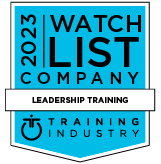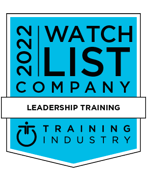The Synergy of Corporate Culture and Performance: A Guide for Leaders

The Synergy of Corporate Culture and Performance
Many think that culture should develop organically. That’s wrong. Also, that leaders can’t rebuild a broken culture. That’s wrong too.
One thing that is true: corporate culture and performance are inextricably linked. 69% of organizations that adapted during the pandemic say culture offered a competitive advantage (PwC).
John Kotter and James Heskett examined the corporate culture and performance of 200 companies and found that those with strong organizational cultures grew their net income by 756%, compared to 1% of those with weak culture.
In their book, they argue that individual leaders do have the power to transform a failing culture. Spoiler: pool tables, Friday beers, a sense of employees getting along and even pay rises are not enough…
What Does "Synergy" Mean in This Context?
Synergy: “the whole is greater than the sum of its parts.”
Picture an environment enabling seamless collaboration, where teams understand and harness unique strengths for unprecedented productivity, efficiency, and adaptability, exceeding strategic goals and thriving in an ever-evolving landscape where just about anything could be lurking around the corner.
Why Leaders Should Care
Toxic culture makes employees feel demoralized and disengaged, and as of last year, that’s how 65% of the U.S. workforce feels (Gallup). But organizations with highly engaged employees are 59% less likely to experience turnover (Gallup).
It’s why 56% of people said a good workplace culture was “more important than salary” for job satisfaction (Glassdoor).
Corporate culture and performance: it’s intertwined through every part of a business, from the way employees feel about their work, interact with each other, and respond to challenges, to how mistakes are treated and ideas around work-life balance.
But while 77% of senior managers feel connected to the company’s purpose, only 54% of other employees feel the same (PwC).
The Role of Leadership in Shaping Corporate Culture
Leadership Styles and Their Impact
- Autocratic leaders who make decisions independently can see swift actions but potentially stifle creativity and employee morale.
- Democratic leaders who involve team members in decision-making foster engagement and innovation.
- Transformational leaders inspire and motivate their teams toward a shared vision, resulting in higher employee commitment and organizational adaptability.
- Laissez-faire leaders grant autonomy which can spur creativity but may lack direction.
- Transactional leaders focus on clear goals and providing rewards and punishments based on performance, creating a results-driven culture but one lacking creativity and long-term thinking.
Leadership and Culture
Over 70% of US employees say connecting to their company's culture and values motivates them to do their best work (Salesforce).
The link between leadership and culture is the linchpin of an organization's success. Effective leaders serve as role models of organizational culture and employee performance, of desired behaviors and values. And culture either empowers or hinders leaders in implementing strategies and motivating teams.
How Corporate Culture Affects Performance
The Metrics That Matter
Culture can be easy to feel, but hard to quantify. DX Learning's The CARE Experience® helps managers, at all levels, develop empowered teams that innovate, connect, and collaborate. We have a series of pre and post tools to ensure that cultural change is realized:
- CARE Engagement Survey: to gather data on cultural norms, isolate leadership challenges to track and measure change in corporate culture and performance.
- CARE Cultural Diagnostic Survey: For awareness of team challenges when working with intact teams.
- CARE 360 Behavior Tracker: Ideally done every 6 months, to track and measure corporate culture and performance.
- ProHabits Habit Reinforcement Technology: 30, 60 or 90-day, to make sure habits stick.
- CARE Coaching: A portfolio of coaches for leaders after CARE training.
- Consultation & Customization Design Services: Customizing CARE to match your culture (vision, values, and behaviors).
Real-world Examples
The Good:
Google - Employees aspire to Google’s mission to “organize the world’s information and make it universally accessible and useful,” seeing their work as impactful and important.
HubSpot – HubSpot employs a no-door policy and doesn’t believe that employees need to punch a time clock or sit in an office to do great work.
The Bad & the Ugly:
Amazon – Many employees use terms like “bruising,” “relentless,” and “churn and burn” to describe their experiences there. When employees hit a wall, they seem to be left to climb it alone.
Uber - The New York Times called Uber’s company culture “aggressive and unrestrained,” and Uber even admitted that its thriving toxicity poses a risk to investors.
Strategies for Leaders to Foster Synergy
Implementing Change
A culture is rooted in people, and people can change, as long as they do so with intention. So, lead by example:
Cultivate Trust: Demonstrate transparency, authenticity, and integrity in your actions, and create shared experiences such as collaborative projects or team-building activities.
Set Clear Goals and Expectations: Communicate goals clearly and involve team members in goalsetting processes to foster a sense of ownership, purpose and unified motivation.
Nurture psychological safety: Create a safe space where employees can ask questions and share their concerns and ideas with you. Take meaningful action on feedback – it could lead to breakthroughs.
Celebrate Diversity: Embrace the unique strengths, experiences, and talents of individuals, to create an inclusive environment where everyone feels valued and appreciated.
Encourage Support and Recognition: Recognize individual and collective achievements and encourage team members to celebrate one another's successes and help when needed.
Inspire Development: Instead of passing judgment, start coaching. Nurture individual talents and aspirations, and provide opportunities for skill enhancement, experimentation, and growth.
Overcoming Challenges.
The real obstacles to changes in corporate culture and performance are internal obstacles: false ego, fear, complacency, and preconceived ideas. Even if change is positive, it can be met with resistance.
DX Learning's The CARE Experience® stimulates a growth mindset for inclusive, self-aware, and empathetic leadership. Using neuroscience-based training and experiential learning, we help leaders understand the synergy between corporate culture and performance, to create a psychologically safe and people-first culture that will strengthen your organization.
Your Next Steps as a Leader
Key Takeaways
Embracing the responsibility in shaping organizational culture and employee performance, and prioritizing synergy, is one of the most critical mindsets shifts that happen in a leadership journey.
When leaders understand the link between corporate culture and performance, they’ll nurture a more engaged workforce that gives the best of themselves every day.
Get in touch to discuss how DX Learning can help you to design a culture that unlocks the potential of your people and your organization.
Mini FAQs:
What is the relationship between leadership and corporate culture?
Leaders serve as the architects of organizational culture and employee performance, setting the tone for how employees interact and behave, shaping it through their values, actions, communication and decisions.
What does Schein say is the connection between leadership and culture?
According to Edgar H. Schein, a Professor Emeritus at the MIT Sloan School of Management, leadership and culture are two sides of the same coin. Leadership is the source of the beliefs and values and the most central issue for leaders is to understand the deeper levels of a culture (…) and to deal with the anxiety that is unleashed when those assumptions are challenged.
What is the role of corporate culture and leadership?
Whereas a strong alignment can support leaders in implementing their strategies and foster employee engagement, adaptability and a sense of shared purpose, toxic misalignment can lead to disengagement, roadblocks, and leadership failures.
What is the summary of corporate culture and performance?
Organizational culture and performance are intricately linked, with culture shaping success or creating challenges in achieving organizational goals.
Insights

Subscribe to Our Monthly Newsletter!
For managers and talent professionals who truly believe in putting people first, the CARE to Win blog is your gateway to the latest insights on human-centric leadership. Join us as we champion the people first movement.
Need some time apart? Are we emailing you too often? Just give us your feedback, and we promise we’ll respond. We really do care. And if it’s still too much, just unsubscribe. It’s cool.


